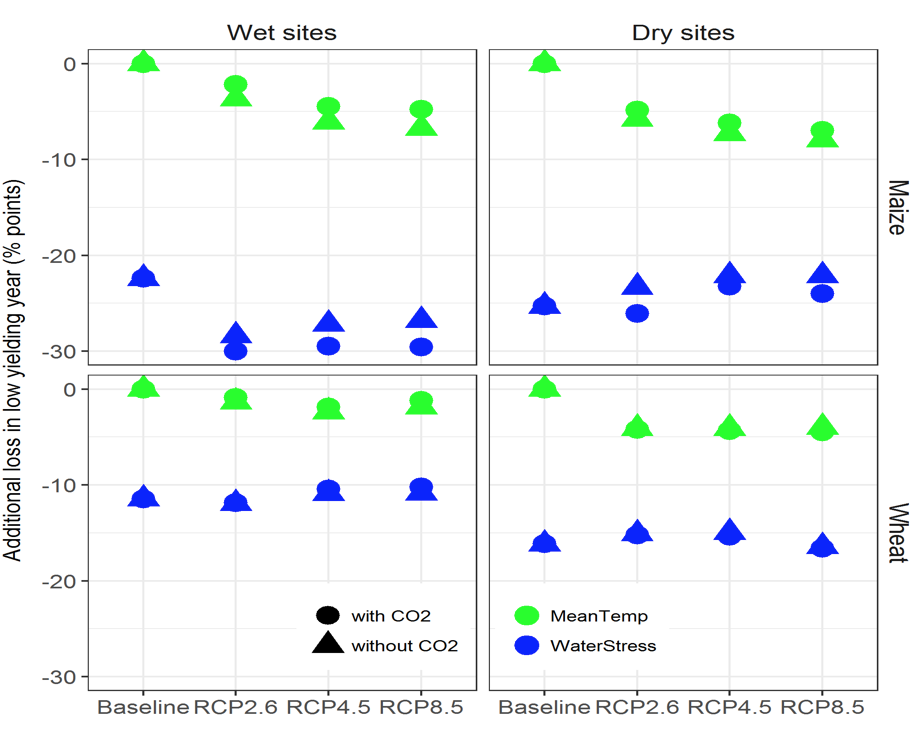Europe
Main Contact for Initiative
Ignacio Perez Dominguez
Brief Description of Activity
CGRA Europe, discussion stages of different activities, highlighting similarities and differences
Contributing Institutions
FACCE JPI, MACSUR, AgMIP EC, JRC, CIRAD, PIK, ZALF, WUR, JHutton ,IIASA
Stakeholders
- EU commission,
- national governments,
- regional policy makers
Noteworthy Findings (discussion points)
- 5 GCM, 2 clim scen, 6 CMs readily set up for EU-27 on a 25 km grid for further activities
- JRC study on global shocks impacting European economy
- Agri-SSP (RAP) development


Figure: Webber et al. under review
Papers
200+ scientific papers published under MACSUR, including Pan-European modelling studies, Policy Briefs
MACSUR Update
Main Contacts for Initiative
Frank Ewert and Heidi Webber
Brief Description of Activity
Network of agricultural modelers with ambition to assess climate, socio-economic and technology developments in EU agriculture at both continental scale and in a series of regional case studies. Current plans for a CGRA study to investigate biological potential of new varieties and implications for technology trends in economic studies
Overview of Participants
MACSUR members
Current Research Focus
What are the main drivers of climatic variability on EU cereals and how are they projected to change under climate change

Figure. Drought, continues to drive yield variability. Difference between average level and years with yields in lowest decile of reduced potential relative to baseline levels (green) or losses from drought (blue) for rainfed maize and winter wheat
Recent Noteworthy Finding
Our study revealed that drought, not heat stress, will persist as the main driver of yield losses and variability for current maize and winter wheat cropping systems under climate change. Continued use of current varieties will lead to losses in maize and potential gains for winter wheat, with little changes in relative yield variability.
